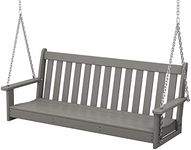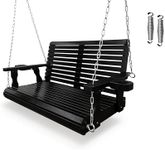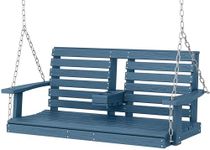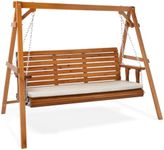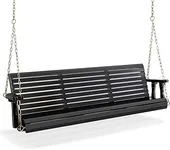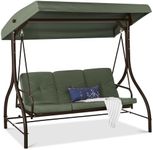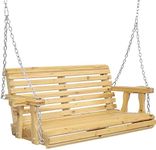Buying Guide for the Best Porch Swings
Choosing the right porch swing can greatly enhance your outdoor relaxation experience. When selecting a porch swing, it's important to consider various factors to ensure it meets your needs and preferences. Here are some key specifications to consider and how to navigate them to find the best fit for you.MaterialThe material of a porch swing affects its durability, maintenance, and appearance. Common materials include wood, metal, and wicker. Wood swings, such as those made from cedar or teak, offer a classic look and are durable but may require regular maintenance to prevent weather damage. Metal swings, often made from wrought iron or aluminum, are sturdy and can have intricate designs but may need protection from rust. Wicker swings provide a cozy, rustic feel and are lightweight but may not be as durable in harsh weather. Choose a material that matches your aesthetic preferences and the climate of your area.
Size and Seating CapacityThe size and seating capacity of a porch swing determine how many people can comfortably use it at once. Swings typically range from single-seaters to those that can accommodate three or more people. A single-seater is ideal for solo relaxation, while a larger swing is perfect for couples or families. Measure your porch space to ensure the swing fits comfortably without overcrowding the area. Consider how you plan to use the swing and who will be using it most often to decide on the appropriate size.
Weight CapacityThe weight capacity of a porch swing indicates the maximum weight it can safely support. This is crucial for ensuring the safety and longevity of the swing. Weight capacities can vary widely, from around 250 pounds for smaller swings to over 600 pounds for larger, more robust models. Assess the combined weight of the potential users and choose a swing with a weight capacity that exceeds this amount to ensure stability and safety.
Comfort and CushioningComfort is a key factor in enjoying your porch swing. Some swings come with built-in cushions, while others have hard seats that may require additional padding. Look for swings with ergonomic designs that support your back and provide a comfortable seating angle. If the swing does not include cushions, consider purchasing weather-resistant cushions separately to enhance comfort. Think about how long you plan to sit on the swing and choose one that offers the right level of comfort for extended use.
Hanging MechanismThe hanging mechanism of a porch swing affects its stability and ease of installation. Common hanging mechanisms include chains, ropes, and metal brackets. Chains are durable and adjustable, making them a popular choice. Ropes can add a rustic charm but may require more frequent inspection and maintenance. Metal brackets provide a secure attachment but may be more challenging to install. Consider the structure of your porch and the ease of installation when choosing a hanging mechanism. Ensure that the swing comes with all necessary hardware and that your porch can support the weight of the swing and its occupants.
Style and DesignThe style and design of a porch swing contribute to the overall aesthetic of your outdoor space. Swings come in various styles, from traditional to modern, and can feature different design elements such as curved backs, armrests, and decorative details. Choose a style that complements the architecture of your home and your personal taste. Consider whether you prefer a more ornate design or a simple, minimalist look. The right design can enhance the visual appeal of your porch and create a welcoming atmosphere.

